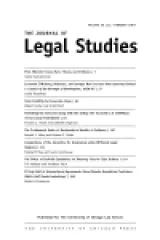- | F. A. Hayek Program F. A. Hayek Program
- | Journal Articles Journal Articles
- |
The Transformation of Labor Supply in the Pre-Industrial World
Originally published in Journal of Economic Behavior and Organization
In pre-industrial economies labor supply curves bent backwards at very low levels of income. This changed in England before the industrial revolution. Using a model of labor supply where consumption takes time, this paper shows that both an increase in the cost of subsistence and a fall in the price of time-intensive consumption could have generated an increase in hours worked but that only the latter would lead to an increase in the elasticity of labor supply.
In pre-industrial economies labor supply curves bent backwards at very low levels of income. This changed in England before the industrial revolution. Using a model of labor supply where consumption takes time, this paper shows that both an increase in the cost of subsistence and a fall in the price of time-intensive consumption could have generated an increase in hours worked but that only the latter would lead to an increase in the elasticity of labor supply. This model clarifies the role played by consumption in the behavior of labor on the eve of the onset of modern economic growth, distinguishing between an increase in hours worked caused by changing patterns of demand [the case of England] and an increase in hours worked caused by involution [the case of Italy and possibly Japan].
read more
Find the paper at ScienceDirect.


